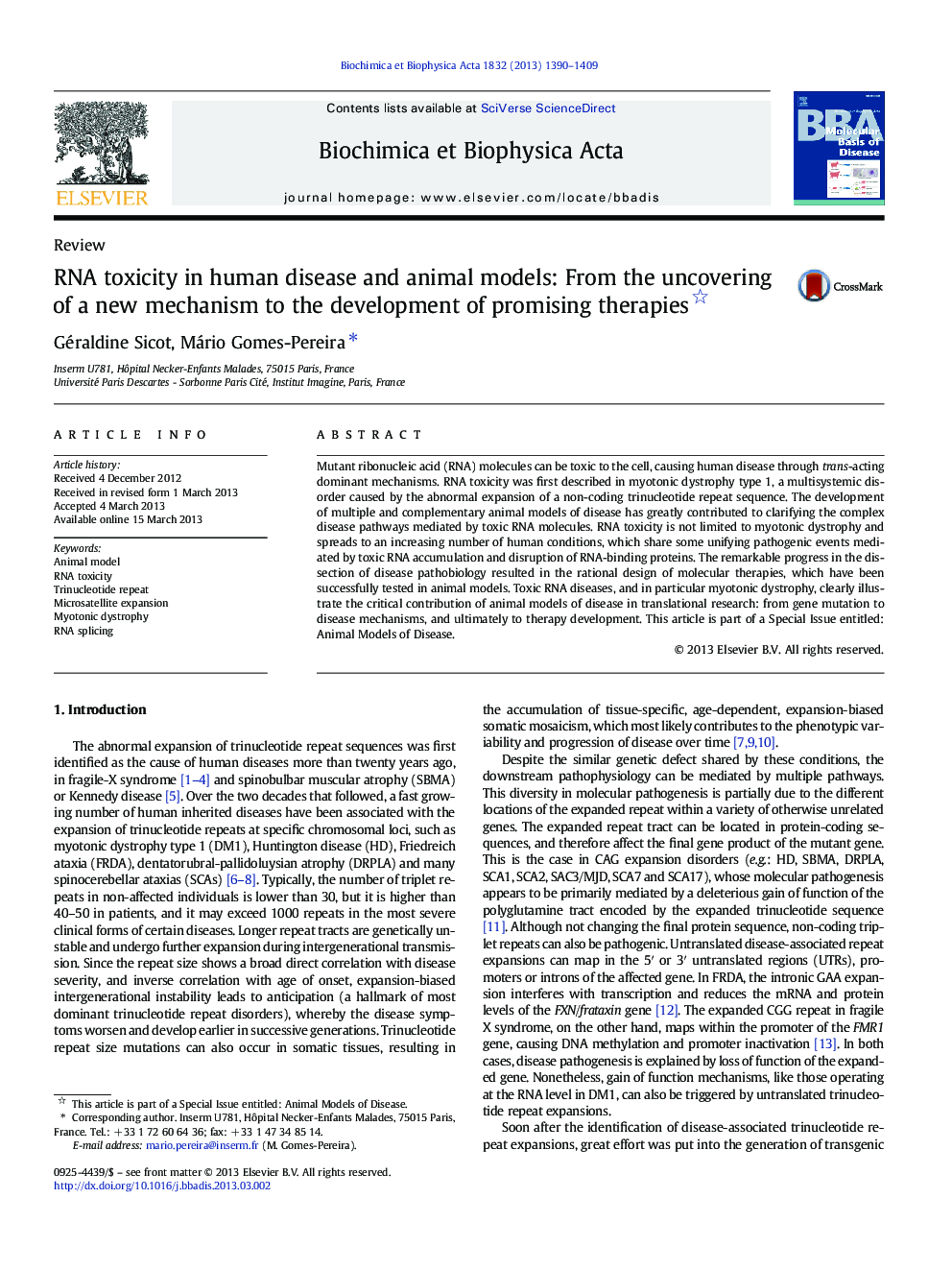| Article ID | Journal | Published Year | Pages | File Type |
|---|---|---|---|---|
| 1904833 | Biochimica et Biophysica Acta (BBA) - Molecular Basis of Disease | 2013 | 20 Pages |
•Expanded RNA repeats can be deleterious, causing multi-systemic diseases.•Myotonic dystrophy is the prototype of an increasing number of toxic RNA disorders.•Animal models have elucidated the mechanisms of RNA toxicity.•Toxic RNAs usually accumulate in the nucleus and disrupt RNA-binding proteins.•The understanding of disease mechanisms allowed the design of rational therapies.
Mutant ribonucleic acid (RNA) molecules can be toxic to the cell, causing human disease through trans-acting dominant mechanisms. RNA toxicity was first described in myotonic dystrophy type 1, a multisystemic disorder caused by the abnormal expansion of a non-coding trinucleotide repeat sequence. The development of multiple and complementary animal models of disease has greatly contributed to clarifying the complex disease pathways mediated by toxic RNA molecules. RNA toxicity is not limited to myotonic dystrophy and spreads to an increasing number of human conditions, which share some unifying pathogenic events mediated by toxic RNA accumulation and disruption of RNA-binding proteins. The remarkable progress in the dissection of disease pathobiology resulted in the rational design of molecular therapies, which have been successfully tested in animal models. Toxic RNA diseases, and in particular myotonic dystrophy, clearly illustrate the critical contribution of animal models of disease in translational research: from gene mutation to disease mechanisms, and ultimately to therapy development. This article is part of a Special Issue entitled: Animal Models of Disease.
